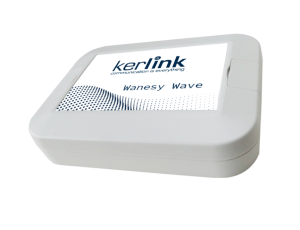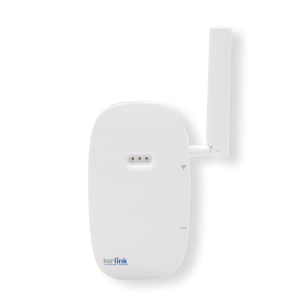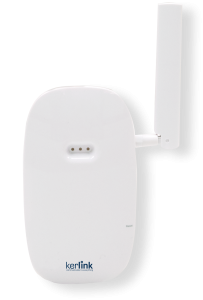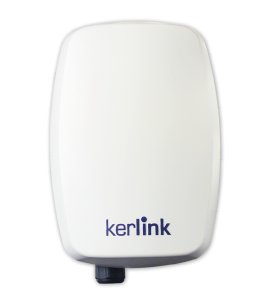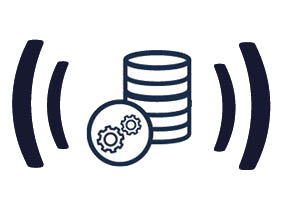Retail & Public Spaces
For retail shops, shopping centers and public cultural spaces, visitors experience is driving the adoption of IoT
Retail Stores
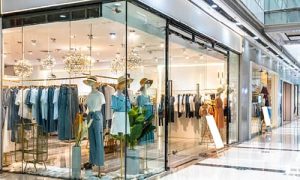
According to McKinsey, 83% of retail customers are looking for a more personalized shopping experience and retailers who create that experience can look forward to a potential revenue increase of 20% to 30%[1]. Marketing studies also show that consumers increasingly combine physical and digital shopping experiences in two ways: on the one hand, they read product reviews online and then make well-informed purchases in a store; and, on the other hand, they touch and see products in a store first and then order them online (aka “showrooming”). Both brick-and-mortar and digital commerce thus have specific benefits and, even though in-store shopping’s share of retail sales is declining in the digital era and is especially suffering in a context of pandemics like COVID-19, consumers still gravitate toward its irreplaceable experiences. Phygital retail thus attempts to cross the divide between the physical and digital worlds and represents the fusion point of both online- and offline- commerce marketing techniques. By digitalizing points of sale, retailers seek to optimize and measure the effectiveness of their marketing strategy and commercial campaigns to attract new customers, to improve the shopping experience and to increase the overall spending of their clients. Phygital techniques and smart retail solutions leverage innovative tools and put cutting-edge technologies within reach of the general public to make in-store shopping more responsive and interactive, which strengthens customer loyalty, deepens customer intimacy and increases retailers’ share of wallet.
IoT sensors and devices, combined with IoT beacons and IoT wireless networks can help to collect the data required for relevant and actionable analysis of the consumer’s journey and behavior in the point of sale. IoT technology now allows non-intrusive and fully anonymous smartphone detection to count visitors entering or exiting the store, to trace their paths in stores, to identify in which aisles and areas they go, which items they consider and how long they stand in front of a specific corner, shelf or display. Turnkey IoT solutions can record and map shoppers’ journeys to assess, adapt and optimize in-store merchandising, assortment, placement and promotion. This in-store information can also be combined with other customer data to provide store owners and managers with valuable retail intelligence to increase foot traffic and sales, as well as measure effectiveness of marketing campaigns. Tailored sales actions and operations, combined with loyalty programs, can be designed to increase customers visits to the point of sales and to deliver them personalized experience, customized offers and dynamic pricing, thus making marketing investment more profitable. Using the same private IoT network, shop owners can also deploy additional ranges of IoT sensors to manage properties and assets, like energy consumption monitoring, air quality analysis, heating and lighting management, smoke or leaks detection, theft and intrusion prevention, goods inventory or cold-chain and food temperature control, among many others. Customers can also express their satisfaction by using autonomous and connected voting terminals to quickly fill in on-spot-surveys. Shop owners can also improve the pperational management of store staff so as to adapt it to shop traffic and areas of greatest attractiveness.
Kerlink industrial-grade IoT solutions, powered by LoRaWAN technology, bring the cost-efficient, low power, wide area and deep indoor coverage to help smart retail specialists to build responsive end-to-end smart retail analytics solutions for brick-and-mortar merchants. Kerlink IoT LoRaWAN gateways and network management tools, can deliver the robust, performant and reliable IoT connectivity needed by smart retail players, retail outlets owners and shops managers to quickly and easily deploy their private IoT network, whatever the number of locations. Kerlink easy to install, small size and long range IoT beacons can help retailers to leverage phygital to create personalized shopper experiences and build brand loyalty by enhancing visitor in-store journeys. McKinsey states that the tech-enabled “store of the future” can double retailers’ EBIT margins and will be easier to operate, while also providing a better customer experience and greater employee engagement[2]. And IoT connectivity is definitely part of the plan!
Shopping Malls
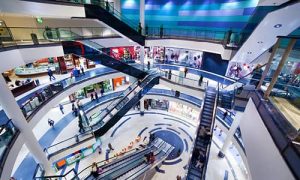
A shopping mall is a large indoor shopping center, usually anchored by department stores. The term “mall” originally meant a pedestrian promenade with shops along it, but in the late 1960s, it began to be used as a generic term for the large enclosed shopping centers that were becoming commonplace at the time[1]. In recent decades, the concept of the shopping malls, after being originated in the US, became a modern retail trend worldwide and proliferated across the globe, the largest malls now being located in Asia and especially China. The malls as it has initially been conceived for the last half century is now at a critical inflection point. The e-commerce revolution and the rise of digital technologies are reshaping consumers expectations and modifying the role played by stores from selling products to delivering entertaining and engaging customer experiences. These trends are forcing mall operators and managers to rethink the way they design and operate their properties, especially to stay relevant, drive growth and boost efficiency, in an even more challenging economic situation, worsened by the COVID-19 pandemics (according to Coresight Research, 25% of America’s roughly 1,000 malls will close over the next three to five years). Malls must move away from commoditized shopping experiences and head for a richer value proposition to differentiate from basic products selection, price comparison and always-on nature of e-commerce[2]. Experience around live leisure and entertainment brings value-added proposals that digital shopping cannot match. The right balance in tenants’ selection, between those that can drive traffic and those that bring a sense of novelty or ephemeral concept, aims at creating a sense of unexpected and discovery. Additionally, the creation of segmented and targeted zones and themes enable shopping centers to fight commoditization. All these efforts must be accurately sized, monitored and analyzed so as to assess their relevance and performance. If omni-channel strategies are already in place for retailers present in the malls, the shopping center itself must use the benefits of digital to its own benefit to generate traffic, build loyalty and improve customer satisfaction. And this is where IoT comes in the picture.
IoT sensors and devices can help malls operators to efficiently manage their properties in different aspects. First IoT can improve building management for example to monitor energy, water and lighting usage to improve malls sustainability, reduce their greenhouse footprint and cut operational costs to improve the bottom line. Or to monitor and manage assets like escalators, lifts or air conditioning systems, among others, to improve predictive maintenance, increase uptime and also reduce operational costs. IoT sensors can also help to dynamically route visitors to available parking places. The same way, security management can directly benefit from IoT to detect fires, water leaks, control access and monitor the number of people in the crowded areas in real-time. Combined with air quality measurement, especially for closed spaces, ambiance monitoring and cleanliness, IoT can bring the appropriate means to ensure visitors’ safety and staff’s optimal working conditions, especially in times of pandemics like COVID-19. IoT devices and sensors can also help to track and locate mobile assets like trolleys, shopping carts, wheelchairs or smart scanners, among others, to get instant and detailed inventory and location of equipment to keep customers informed. IoT can also enable dynamic surveys of visitors’ satisfaction to collect instant feedback on multiple topics like animations, access, cleanliness or new concepts tested to improve services, adapt operations and streamline processes to make shopping malls even more attractive. IoT sensors, combined with IoT beacons and IoT wireless networks, can help to analyze visitors flows and customers behaviors in the different areas of the mall and the stores (heat map), to measure attendance in different times of the day, define in-mall typical customer journey and measure frequency of visit and average, minimum or maximum time of presence. This can help shopping malls to adapt services, animations and staff allocation to accommodate to the patterns of customers’ behaviors and to improve visitors’ experience.
Kerlink industrial-grade IoT solutions, powered by LoRaWAN technology, bring the cost-efficient, low power, wide area and deep indoor and outdoor coverage to help shopping malls operators to revolutionize the experience of shopping and to improve their bottom line by efficiently managing their properties. Kerlink IoT LoRaWAN gateways and network management tools, can deliver the robust, performant and reliable IoT connectivity to efficiently connect a wide range of IoT sensors and devices for both simplified building management, contextualized assets tracking, real-time visitors’ flows analysis and dynamic customer satisfaction surveys. Shopping centers managers can use the collected data to make timely decisions to create attractive animations, define the right set of services, hire the right team and deliver the right guidance to visitors, to increase visits and demand over time. Kerlink easy to install, small size and long range IoT beacons can help shopping malls managers to leverage phygital to create personalized shopper experience and increase loyalty by enhancing visitor in-mall visits and journeys.
Museums & Galleries
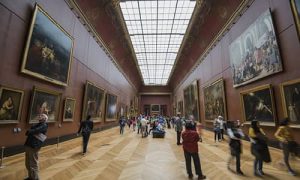
According to the UNESCO, the number of museums around the world has increased from 22,000 in 1975 to 95,000 today[1]. Private collections are split over an estimated 300 publicly accessible art museums worldwide, with over 70% of all private museums having opened since 2000[2]. If museums and art galleries are critical institutions for the cultural fabric of a city, community and society, an increasing number of collections are lacking the appropriate funding and resources for their management, monitoring and protection. It has always been difficult and expensive for museums and other art galleries professionals to conveniently gather environmental information for the collections’ preservation. It is also becoming increasingly important for them to monitor, measure and evaluate the flow of visitors. Counting attendance, analyzing visitors’ journey or assessing collections attractiveness are also increasingly challenging for curators to adapt museography, scenography and thematic routes. Until recently, museums curators, collection owners and galleries managers were lacking the appropriate means to conveniently gather, combine and value this key visitor information. Additionally, museums are not only facing growing competition to gain visitors and attract patrons but must also adapt to evolving visitors’ expectations for news ways to digitally engage with objects and visited places. The internet of things (IoT) is changing this approach and setting a new standard for museums and artists alike.
IoT sensors and devices can help museums, art galleries, archives and monuments managers in different ways. First, they can help to monitor building indoor environment and conditions to protect valuable pieces of art, documents and other assets. Metrics like temperature, relative humidity and mold risk, dewpoint, illuminance and natural light exposure, ultraviolet level or vibration are key common factors that can irremediably affect and damage collections as well as constructions. IoT devices can also be used to detect fire, water or intrusion to increase the level of protection. Battery-powered IoT sensors help to capture real-time data at constant intervals and all use the same private IoT network. IoT devices can also help to detect metal corrosion or mechanical damage on objects and structures, and can efficiently help to fight pest infection in remote parts of the buildings or where specific objects like books and scrolls are archived. IoT sensors and devices can also help to improve exhibition attractiveness by measuring attendance. If the success of an exhibition is mainly driven by the uniqueness of exhibits and the popularity of artists and authors, IoT sensors will bring the granularity to count visitors at major entry points. They will also help to understand which areas of the gallery gain most of popularity and which art works attract most of visitors’ attention and gather the greatest number of guests, along with the time spent in each area. Curators can thus get a real-time view on the number of visitors, analyze visit frequency, visitor loyalty, dwell time, peak hours, arrival and departure times, attendance segmentation, and visitors’ map and path throughout the gallery. IoT solutions can also bring the creative potential of technologies to digitize the exhibits and raise the level of visitors’ engagement and interaction. IoT sensors can detect presence and trigger the download of apps that will bring objects to life, modify appearances based on human interactions and change the experience of art. Additionally, IoT beacons connected to the IoT network can detect visitors and help them to use interactive digital maps to position themselves and to be alerted to specific nearby objects. Data about attendees and visits will allow not only to improve the service but also to provide competitive edge to museums and art galleries: processing data, museums will be able to adapt current collections and improve the design of upcoming exhibitions, raising the level of interest and adapting space.
Leveraging Kerlink IoT LoRaWAN gateways, beacons and network management tools, can help to quickly and cost-efficiently bring IoT solutions in museums and art galleries to protect collections, gather insights on attendance and generate valuable data to improve visitors’ satisfaction. Kerlink industrial-grade IoT solutions can bring the low power, long range and deep indoor coverage requested to connect a wide range of IoT sensors and devices to collect relevant data for museums curators, collection owners and galleries managers. Museums can evaluate their emotional impact on visitors, assess the time spent by visitors in their different rooms and estimate how their efforts can have impact on their brand, visibility and image to influence and attract visitors.
[2] https://www.larryslist.com



